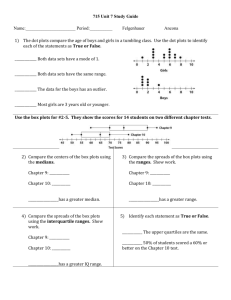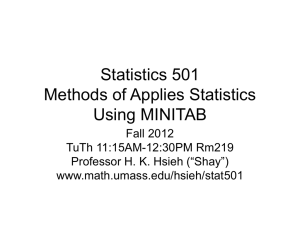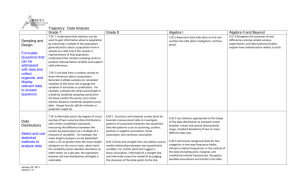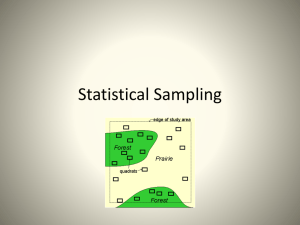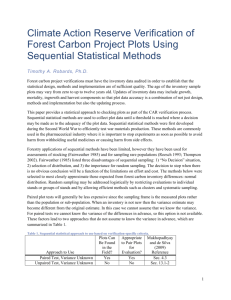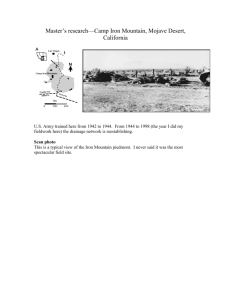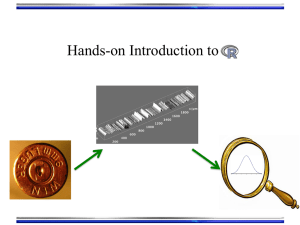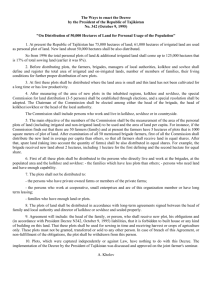the PowerPoint presentation
advertisement
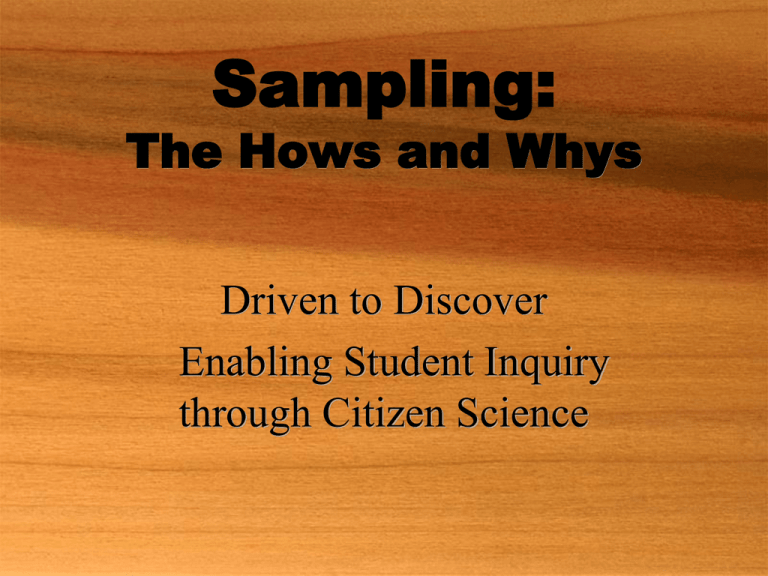
Sampling: The Hows and Whys Driven to Discover Enabling Student Inquiry through Citizen Science Sampling Sampling: to collect data on a subset of a population From samples we make inferences about the overall population. Sample size: as the fraction of the total population included in the sample rises, the greater the confidence the researcher can have in the accuracy of the inferences. Why sample? Unless you plan on measuring every individual you will need to select a subpopulation for investigation Why sample? Unless you plan on measuring every individual you will need to select a subpopulation for investigation Field of milkweed: how tall are they Measure them all? A complete count may be possible here…. But not here. Sampling may be needed. This situation is more common in science. Why sample? Unless you plan on measuring every individual you will need to select a sub-population for investigation BUT HOW??? Random or structured? Samples can be selected in either a random or a structured manner. Some studies and sites lend themselves to one or the other Deciding random vs. structured is one of your first major decisions. Structured Every n’th bush, bird, etc Important that the starting point be randomly chosen, however. This is not random, but structured. The “nth” determined by fraction of total population you want included. Structured Plots at a set distance and compass heading eg. every 20 meters in a N-S/E-W grid The starting point can be logically chosen: the gate we walk though, or 20 feet in from the corner of the site Randomly chosen Random All bushes, birds, etc have an equal chance of selection Draw numbers from a hat…. Plots at a random distance and compass heading Each iteration will be unique Hybrid A combination of structured and random selection. This is fairly common. Plots could be laid out along a transect at set distances, but the direction of the transect could be randomly determined. NEVER! arbitrary Structured or random selection are OK, but it is NEVER permissible to choose arbitrarily Arbitrary: one here, one over there, one by the corner…. Structured Defined rules for selection Random: no control or decisions by the researcher. Usually with no rules* It is legitimate to require that no 2 random sites be within a set distance of each other. Easy to confuse random and arbitrary, but they are not the same. Rules for both Regardless of whether you are using a structured or random assignment, what you get is what you get! Do NOT! skip a plot because it looks too hard, or does not have any plants, and do not choose points because they look “good” When to use structured assignment Structured assignment of samples is good sampling, and appropriate in some cases. Often used in bird surveys Also good if doing plots inside a single, larger study site, especially if the plots will be permanent. When to use random assignment Random sampling is the gold standard Best if wanting to make inferences from a population of discrete, obvious individuals Also used in identifying research sites Stratified Sampling Choosing random samples from 2 or more classifications inside the overall population Have equal numbers of men and women Select research sites of different classes proportional to the ratio of that class How to achieve randomness How you achieve randomness will depend on project, here we assume random allocation of plots Computerized maps to randomly choose plots Hand drawn and manually selected plots Random distance and direction Computers GIS software--such as Arc-Map will allow you to map your sites, define plots, or choose random points Hand drawn plots Map your study site on paper Break it into blocks Columns, rows Randomly select row and column (draw numbers from a hat, or other random selection) Number every potential plot, randomly draw Repeat until the needed number of plots is selected. Random distance and direction From a starting point (the center of the site, an edge, the trailhead, or a random point itself) generate a random compass heading. Spin a wheel, draw numbers 1-12 (the clock) from a hat, spin a stick or pencil…. Proceed in the direction indicated Repeat as needed. Distance can be standardized (or more rarely also random Random concerns Before starting you will need to define rules for the plots How close can they be together Is stratification necessary How many will you need These need to be defined before starting selection and should have a logical, scientific rationale. Sample Size As we discussed, larger samples relative to the population will lead to more confident predictions But also more work The key is to find a sample size large enough to give you statistical significance. Ask the Monarch Lab or your science mentor for help in determining adequate sample size. Love or hate this presentation? Let us know!

